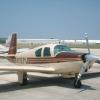Here's something new to kill all the UATs!
-
Members Online
- raymondscott0321
- A64Pilot
- Gilt
- 201er
- Falcon Man
- Jake@BevanAviation
- MoonMan
- Air pirate
- Beechbum
- Rmfriday
- drstephensugiono
- midlifeflyer
- Marc_B
- Steve Dawson
- John Hooker
- Andy95W
- aviatoreb
- N201MKTurbo
- wombat
- Brandt
- clh
- eman1200
- Guy123
- slowflyin
- TCC
- Utah20Gflyer
- Mmrkulic
- AF M20J
- DXB
- Ned Gravel
- takair
- Ibra


Recommended Posts
Join the conversation
You can post now and register later. If you have an account, sign in now to post with your account.